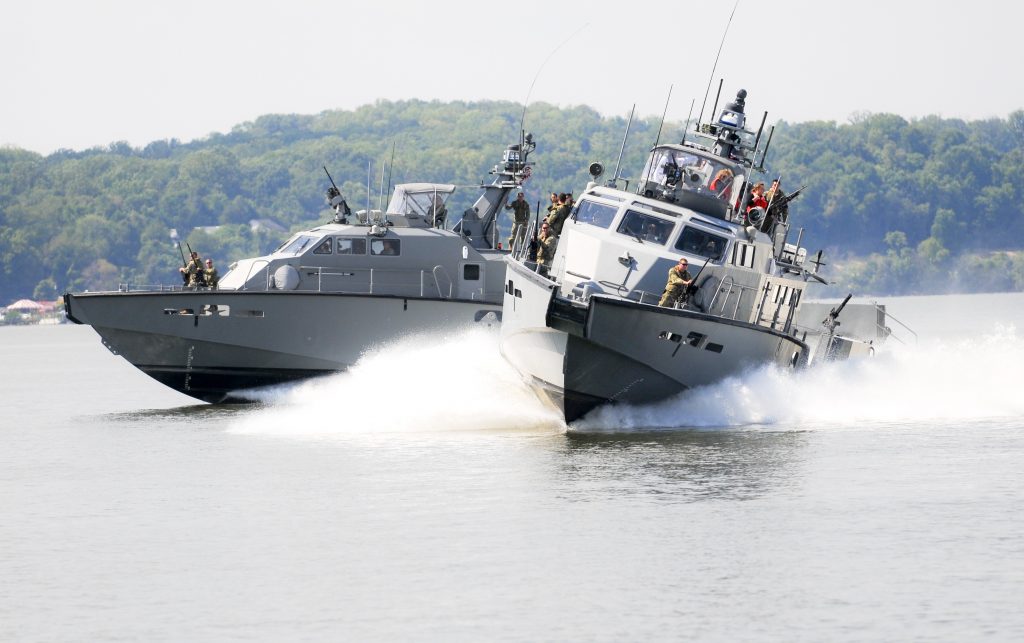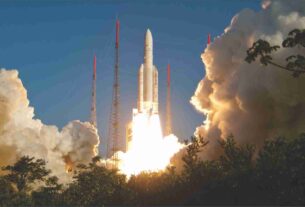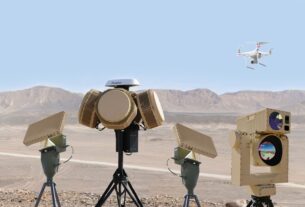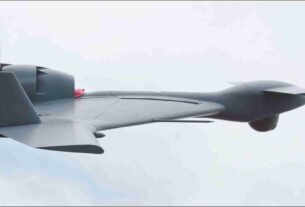Marine robotics could play a bigger in naval warfare
Maritime challenges and naval warfare are adopting new generation of technologies to reduce risk to sea battle and this is going to change the nature of surveillance and naval operations.
The harshness of the maritime environment poses great challenges to marine robots, and they must be reliable, robust, and highly autonomous.
The hardware platform, often called a marine vehicle, must have high quality comparable to that of a spaceship. Indeed, marine vehicles and spaceships have similar trajectories of historical developments, and a number of successful commercial vehicles have emerged recently.
The robotics community is encouraged by the fact that the platform technology has become mature enough to invite new innovations.
One of the greatest demands for marine vehicles comes from the military, naval departments, the offshore oil and drilling industry for underwater construction and operation.
Remotely operated vehicles (ROVs) have been developed for such needs. Work-class ROVs represent a relatively mature and steadily growing industrial sector for marine robotics.
DARPA has successfully completed its Anti-Submarine Warfare (ASW) Continuous Trail Unmanned Vessel (ACTUV) programme.
It has officially transferred Sea Hunter—the vessel demonstrating the autonomous technology—to the Office of Naval Research (ONR) for continued development of the prototype as the Medium Displacement Unmanned Surface Vehicle (MDUSV).
Sea Hunter is the first of what could become an entirely new class of ocean-going vessels able to traverse thousands of kilometres over open seas for months at a time and without a single crew member on board.
Widespread and successful deployment of the autonomous technology could save costs on manpower and eliminate risk to human life on military missions.
“ACTUV’s move from DARPA to ONR marks a significant milestone in developing large-scale USV technology and autonomy capabilities,” said Alexander Walan, a programme manager in DARPA’s Tactical Technology Office (TTO).
“Our collaboration with ONR has brought closer to reality a future fleet in which both manned warships and capable large unmanned vessels complement each other to accomplish diverse, evolving missions.”
Meanwhile, the South Korean government recently announced that it would spend about $18 million (20 billion won) over the next five years to create its creepy-crawly robot.
That represents a doubling of the project’s budget following the sinking of the South Korean Navy frigate Cheonan late last month, which killed dozens of sailors.
Such six-legged devices would walk at speeds of 98 feet per second and swim at up to 59 feet per second. The design specs call for it to patrol the seabed at depths of about 3.7 miles.
A shallow-sea version would come online by 2012, with a deep-sea prototype slated for 2015. The robots would also carry sonar equipment, according to reports.
The South Korean ministry believes that having such a drone might have sped up search and rescue efforts for the Cheonan sinking incident, which took place in the West Sea with strong tidal currents and poor visibility.
Other nations have already deployed small swarms of marine robots for scientific research, and a US robotic glider completed the first underwater robot crossing of the Atlantic late last year. A Canadian robot also became the first Internet-enabled undersea observatory around the same time.
The Center for the Study of the Drone at New York’s Bard College estimates that the Pentagon planned to spend about $325.9 million on underwater robots last year.
They are designed to gather info on the weather and sea state, hunt and defeat mines, plus spy on enemy vessels and installations.
General Dynamics Mission Systems’ robotics line includes both AUVs and “UUVs” — Unmanned Underwater Vehicles, including the smaller Bluefin products and the larger sea bomb-killing Knifefish program, which is designed to be launched from the littoral combat ship, the proposed replacement for the Navy’s Avenger-class minesweepers.
Unmanned surface vehicles (USVs) represent an important branch of marine robotics. Staying on the surface of the water, the USVs usually have better access to localization and communication via electromagnetic links to satellites or to land-based cellular networks.
Low-noise Electronics—interfaces for Ethernet, PCI, USB, EtherNet/IP, PROFINET, CAN, EtherCAT, Wireless, and more Interface Structure—high-strength alloy provides IP60, IP65, and IP68 environmental protection as needed Sensing Beams and Flexures—designed for high stiffness and overload protection
Information Technology As marine platforms are becoming more mature and reliable, information technology plays a more important role.
The classical perception-plan-action cycle has been adopted by most platforms to achieve various levels of autonomy. Recent developments enhance this cycle by incorporating the latest sensing, computing, and actuation technologies.
Furthermore, networked marine robotics becomes a reality supported by the state-of-the-art communication systems. Networked robotics is especially preferred in environmental sensing and ocean observation applications.
Perception, Control, and Planning Many sensors used by ground and aerial robots see severe performance degradation in maritime environments. Cameras are blurred by the turbidity of the water and limited in application due to the significant absorption of light by the water.
There is no equivalence of an odometer, and, hence, underwater robots use a technique called dead reckoning, based on inertial measurement units, to selflocalize.
This localization is significantly less accurate than for terrestrial or aerial mobile robots. Therefore, an external localization service, such as an acousticbased system, is needed for accurate localization.
Underwater perception has to deal with significant environmental disturbances, such as turbidity, low lighting conditions, and unstructured terrains. Progress in this domain may benefit fundamental research in other domains as well.
The limited performance in the perception algorithms calls for improvements over existing control and path planning algorithms.
Many of the novel control ideas may not be applicable for marine robots due to the limited computing resources and the limited information flow available onboard a vehicle.
Path planning often requires a significant amount of computation, and suboptimal solutions that are easier to compute are often pursued. It is perceivable that more investments will be made to increase computing power and sensor capabilities on marine vehicles.
These improvements will potentially open interesting new research directions. Networked and Distributed Marine Robots Underwater networking and communication is such a difficult problem that it is traditionally treated as an independent research field.
However, as reliable commercial acoustic modems have become more accessible and easier to use, a confluence between marine robotics and underwater networking has emerged as mobile maritime networks.
Even though mobile communication underwater is still unreliable, new applications and ideas have been formulated, such as using a swarm of robots to map underwater acoustic fields [17], or using robots to collect data from underwater sensor networks.
This marriage between two previously separate areas is mutually beneficial. Marine robots can leverage underwater networking to enhance their intelligence and to achieve higher mission goals, while underwater networks can leverage marine robotics to survey a deployment site or ferry data.
Maritime mobile sensor networks are potentially useful in environmental monitoring applications. Networked gliders have been used to cooperatively map ocean environments during the AOSN and ASAP experiments.
A key challenge in mobile ocean sensing is coordinating the motion of vehicles to achieve better map-making results. Since networks often operate over a larger area than a single vehicle, ocean circulation models may provide very useful information about the strength and direction of the current that affects the motion control and path planning of the platforms.
New advancements in marine robotics have been spurred by the need to operate autonomous systems in these environments.




